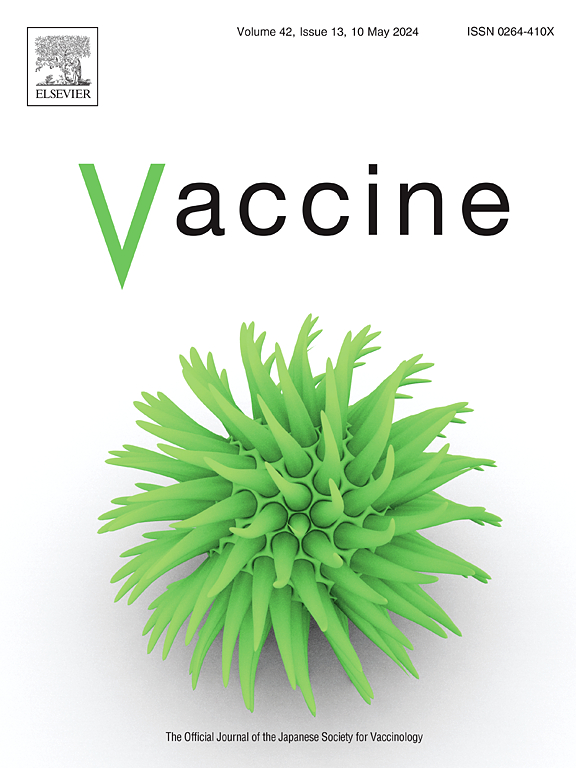2024–2025 BNT162b2 COVID-19 vaccine effectiveness in non-immunocompromised adults: mid-season estimates from vaccine registries in two states linked to administrative claims
IF 4.5
3区 医学
Q2 IMMUNOLOGY
引用次数: 0
Abstract
Background
Data are limited on 2024–2025 BNT162b2 COVID-19 vaccine effectiveness (VE).
Methods
Retrospective cohort study among non-immunocompromised adults from August 22, 2024 (“index”) to December 31, 2024, among residents of California or Louisiana continuously enrolled in health insurance plans reporting to HealthVerity for ≥1 year prior to index. Receipt of 2024–2025 BNT162b2 COVID-19 vaccine was defined using state vaccine registries with health insurance claims, using a time-varying exposure definition. VE against COVID-19-associated hospital admissions was estimated as (1-hazard ratio), using adjusted Cox proportional hazards models with 95 % confidence intervals (CI).
Results
Overall, 6,900,361 individuals met selection criteria for the study. By the end of follow-up (median 4.4 months), 325,362 (4.7 %) had received a BNT162b2 2024–2025 COVID-19 vaccine dose. VE against COVID-19-associated hospital admission was 41 % (95 % CI 2–64).
Discussion
The 2024–2025 formulation of BNT162b2 COVID-19 vaccine provided significant protection, particularly for older adults, in mid-season estimates.
This study is registered on clinicaltrials.gov as NCT06923137.
2019 - 2025 BNT162b2 COVID-19疫苗在非免疫功能低下成年人中的有效性:来自与行政索赔相关的两个州疫苗登记处的季中估计
背景:2024-2025年BNT162b2 COVID-19疫苗有效性(VE)数据有限。方法回顾性队列研究,从2024年8月22日(“指数”)到2024年12月31日,在加利福尼亚州或路易斯安那州连续参加健康保险计划的居民中,在指数之前向HealthVerity报告≥1年。使用具有健康保险索赔的州疫苗登记处,使用时变暴露定义来定义2024-2025年BNT162b2 COVID-19疫苗的接收情况。使用95%置信区间(CI)的调整Cox比例风险模型,估计与covid -19相关的住院率的VE为(1-风险比)。结果总共有6,900,361人符合本研究的选择标准。截至随访结束(中位4.4个月),325,362人(4.7%)接受了BNT162b2 2024-2025年COVID-19疫苗剂量。与covid -19相关的住院率为41% (95% CI 2-64)。在季中估计,2024-2025年的BNT162b2 COVID-19疫苗配方提供了显著的保护,特别是对老年人。该研究已在clinicaltrials.gov注册为NCT06923137。
本文章由计算机程序翻译,如有差异,请以英文原文为准。
求助全文
约1分钟内获得全文
求助全文
来源期刊

Vaccine
医学-免疫学
CiteScore
8.70
自引率
5.50%
发文量
992
审稿时长
131 days
期刊介绍:
Vaccine is unique in publishing the highest quality science across all disciplines relevant to the field of vaccinology - all original article submissions across basic and clinical research, vaccine manufacturing, history, public policy, behavioral science and ethics, social sciences, safety, and many other related areas are welcomed. The submission categories as given in the Guide for Authors indicate where we receive the most papers. Papers outside these major areas are also welcome and authors are encouraged to contact us with specific questions.
 求助内容:
求助内容: 应助结果提醒方式:
应助结果提醒方式:


